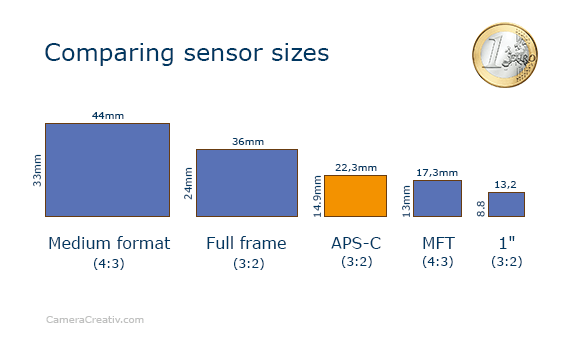Here you can find digital cameras comparison. Pick up with the best rating.
Cameras which are being compared are Mirrorless cameras.

Learn more about compared cameras specifications below. |
|
|
Fujifilm X-T30 vs Sony NEX 6 Specs |
|
|
X-T30
All specs: Main page for X-T30 |
NEX 6
All specs: Main page for NEX 6 |
|
X-T30 vs NEX 6 Sensors |
|
|
On the pictures below the sensor areas of cameras are highlighted. This infographic highlights the sensor areas of both models compared to other common sensor formats:
|
|
X-T30 vs NEX 6: Viewfinder X-T30 has an electronic viewfinder and it’s resolution is 2.36 megapixel with magnification of 0.62x. NEX 6 has an electronic viewfinder with resolution 2.36 megapixel, it’s magnification is 0.73x. Viewfinder magnifications of compared cameras. The black area shows a magnification of 1x, relative to native size; in red is a magnification of 0.85x. |
||
|
X-T30 (0.62x) |
NEX 6 (0.73x) |
|
|
Better choice: Sony NEX 6 |
||
|
Fujifilm X-T30 VS Sony NEX 6 Other Specs Comparison |
|
Why is Fujifilm X-T30 a better choice |
||
|
X-T30 |
NEX 6 |
|
| Sensor cleaning (3) | ||
| Wider resolution (5, megapixel) | 26.10 | 16.10 |
| Auto Focus points (4) | 425 | 99 |
| Better monitor (2, Megapixel) | 1.04 | 0.92 |
| Touch screen (2) | ||
| Better Video (2) | 3840 x 2160 | 1920 x 1080 |
| External microphone (2) | ||
| Longer battery life (3, photos) | 380 | 360 |
|
Conclusion: Advantages of the X-T30 are built-in automatic sensor cleaning, the higher resolution and the faster and more accurate auto focus. Additional pros for the Fujifilm are that the display has a higher resolution, the rather comfortable touch screen and the superior video recording. A recommendation of the X-T30 is made easy by the connector for an external microphone and that the battery has more stamina. The X-T30 scores 23 points. |
||
|
Otherwise why to choose Sony NEX 6 |
||
|
X-T30 |
NEX 6 |
|
| Higher speed (4, frames/second) | 8 | 10 |
| Better sensibility (4) | 200 – 12800 ISO | 100 – 25600 ISO |
| Larger lens selection (3) | 25 | 50 |
| Weighs less (2) | 383g (12.4 oz.) |
344g (11.1 oz.) |
| More portable (2) | 459cm³ (29 cu.in.) |
346cm³ (22 cu.in.) |
|
Conclusion: Advantages of the NEX 6 are that the camera is faster, the larger sensitivity and the larger selection of lenses. We also like the lower weight than the X-T30 and the more compact size. Yields 15 points for the NEX 6. |
||
|
Common Specs for both cameras compared |
||
|
X-T30 |
NEX 6 |
|
| Sensor format | APS-C | APS-C |
| Built-in flash | ||
| Articulated screen | ||
| WiFi | ||
| Fujifilm X-T30 VS Sony NEX 6 Dimensions |
|
Look at front view of the X-T30 and NEX 6 |
|
Top view of cameras |
|
|
Total scores Here’s the total score according to comparison above: |
|
|
Fujifilm X-T30 |
Sony NEX 6 |
|
23
|
15
|
|
We recommend Fujifilm X-T30 as better choice. |
|


